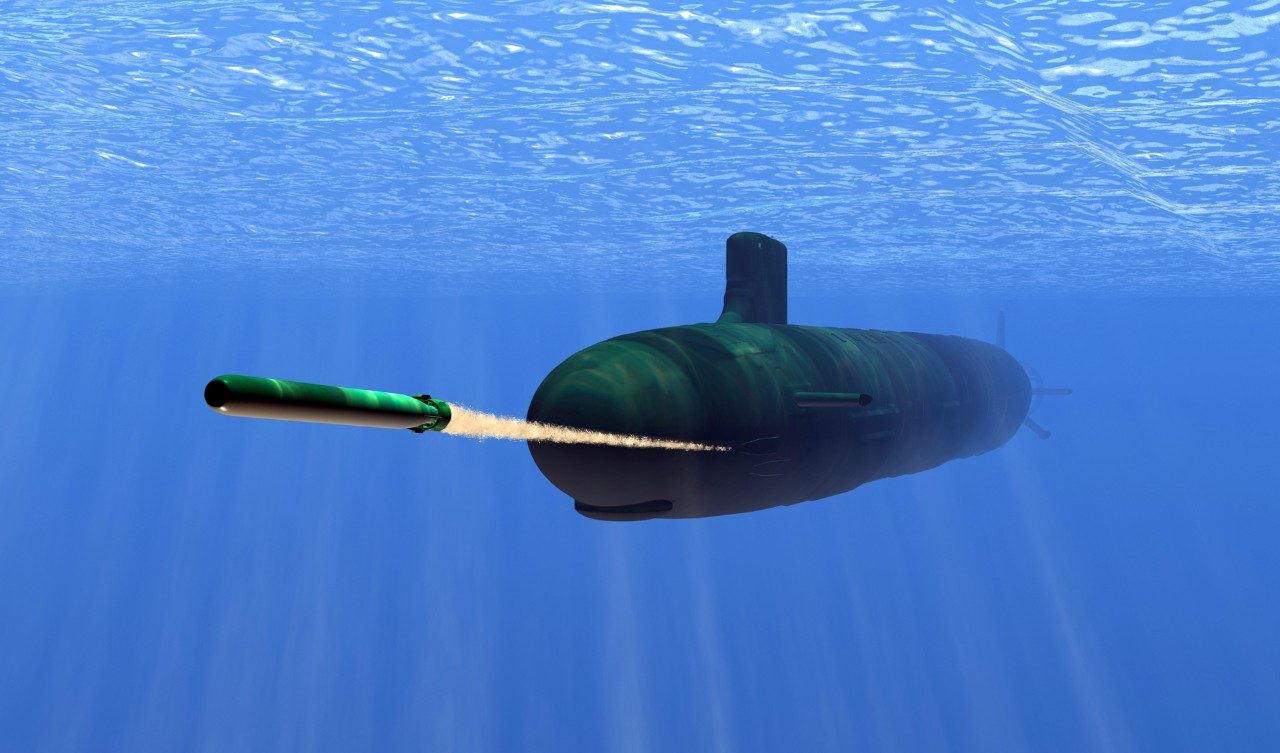If China’s advanced submarines were not enough, the torpedos fired by them are set to become faster and smarter with the integration of Artificial Intelligence (AI), making it much harder for the enemy submarines to dodge during a conflict.
Chinese military experts have disclosed that they are developing an artificial intelligence system capable of deciphering when a hostile submarine employs high-tech acoustic holograms to deceive Chinese torpedoes and their human operators in combat, according to SCMP.
In April 2025, the scientists from the PLA Navy Armament Department and China State Shipbuilding Corporation claimed in a peer-reviewed paper published in the Chinese-language journal Command Control & Simulation that their system had unprecedented precision for torpedoes travelling at high speeds.
The researchers said that even under tense situations, the technology was able to distinguish real submarines from decoys with an average success rate of 92.2% when tested against data from classified high-speed torpedo ranges. “That is a leap from the legacy systems that often miss the target,” the report exclaimed.
This breakthrough comes as the United States and its regional allies grapple with the threat posed by China’s expanding submarine warfare capabilities, bolstered by lethal missiles and advanced stealth technologies.
Notably, China’s submarine fleet is growing rapidly in both size and capability, positioning the Chinese People’s Liberation Army Navy (PLAN) as a formidable force in undersea warfare.
The PLAN has been equipping its submarines with advanced cruise missiles, such as the YJ-18 anti-ship cruise missile and the CJ-10 land-attack cruise missile, thereby enhancing its anti-surface and land-attack capabilities.
Additionally, its Type 096, China’s next-generation nuclear-powered ballistic missile submarine, will be equipped with JL-3 ballistic missiles with extended range to add more teeth to its capability.
The development of an AI-powered torpedo that cannot be evaded by the adversary despite using decoys would make Chinese submarines a nightmare.
How Does This Torpedo Work?
The report refers to a 2025 Chinese blockbuster film, named Operation Hadal or Operation Leviathan, to support the point. The plot of this film centers on intense naval and commando action, featuring submarine warfare, tactical assaults, and advanced military technology.
The film also particularly explores the use of decoys by modern submarines to deceive the enemy torpedoes. The report states that future submarine combat depends on exploiting illusions to trick torpedoes.
As demonstrated in the film, the report states, advanced decoys can be deployed to mimic a ship’s acoustic signature, create a fake bubble trail to give the impression that it is performing an urgent turn, or spread out in synchronized swarms to display ghost targets onto sonar screens. These are all advanced evasion techniques.
These strategies work especially well against so-called ultra-fast supercavitating torpedoes, which are weapons that create cavitation, or bubbles of vapour, around their hulls to reduce drag. The Chinese researchers claim that the noise that results from supercavitation distorts acoustic signatures and drowns out real target echoes.
In a nutshell, the speed achieved by them–up to 200 knots in some cases–comes at the cost of precision in targeting. This disadvantage is exacerbated by the adversary’s use of multiple countermeasures and evasive techniques.
“Current target recognition methods for China’s underwater high-speed vehicles prove inadequate in environments saturated with advanced countermeasures, necessitating urgent development of novel approaches for feature extraction and target identification,” said the team led by senior engineers Wu Yajun and Liu Liwen.
“Only those underwater high-speed systems equipped with long-range detection capabilities and high target recognition rates can deliver sufficient operational effectiveness,” they added.
To solve this problem, the team proposed a method that combines machine learning and physics in an unconventional manner. The group began by modeling decoy profiles using hydrodynamic models of turbulence and bubble collapse patterns to address the scarcity of real-world battle data. They achieved this by using unprocessed data gathered from the PLA Navy’s high-speed torpedo test range.
After this, these simulations were included in a dueling pair of AI systems known as a “generative adversarial network.”
One of them, the generator, studied acoustic and underwater physics to improve decoy fingerprints. Meanwhile, its adversary, the discriminator, was trained to use seven layers of sound pattern analysis to find errors in these forgeries.
The algorithm produced a vast array of synthetic decoy profiles following numerous training cycles.
According to the paper, the AI utilizes a specialized neural network architecture inspired by image recognition. After being normalized for amplitude and filtered through correlation receivers to reduce noise, sonar signals are then converted into spectral “thumbnails” using a mathematical technique called a Fourier transform.
Following that, the neural network’s convolutional layers, which are tailored to identify irregularities in frequency modulation, process these audio bites. Then, pooling operations average out distortions, such as bubble interference.
When faced with the most advanced decoys, the team reported that detection rates increased from 61.3% to over 80%.

The development of this system comes amid a global race for introducing smart torpedos. The team mentions Russia’s VA-111 Shkval torpedo and its US counterparts in development, saying it relies on supercavitation. However, it noted that these torpedoes have difficulty discriminating targets at high speeds.
Thus, distinguishing itself as the only country that has worked its way around the issue, enabling high-speed and precision targeting in torpedoes.
“With continuous advancements in modern underwater acoustics, electronic technologies and artificial intelligence, today’s underwater battlespace often contains multiple simultaneous threats within a single operational area – including decoys, electro-acoustic countermeasure systems, electronic jammers and diverse weapon systems,” the paper said.

The team states that in such demanding underwater environments, where multiple targets or decoys may appear simultaneously, these systems must be able to quickly differentiate between real targets and fake ones to prioritize the most dangerous targets and prevent mission failure or a wasted trajectory.
“Critically, given the autonomous nature of underwater high-speed vehicles, all decisions must be made without real-time external communication support, substantially increasing algorithmic complexity and computational demands,” the team said.
It further added that: “The deep-learning recognition model proposed in this study, combined with the generative adversarial networks’ small-sample identification solution, enables effective underwater target discrimination. This lays the technical groundwork for field deployment.”
This represents a significant advancement over legacy systems, which struggled with decoy differentiation. The AI systems would also enhance guidance through active and passive sonar, as well as wire-guided mechanisms, allowing torpedoes to adapt to noisy underwater environments and evade countermeasures such as jamming or decoys. Therefore, boosting survivability.
China’s AI-powered torpedoes, leveraging supercavitation and advanced target discrimination, likely mark a significant leap in its submarine warfare capabilities.
These torpedos would potentially be integrated into a growing fleet of crewed and uncrewed platforms, and enhance China’s ability to challenge the US and allied naval forces in the Indo-Pacific.



